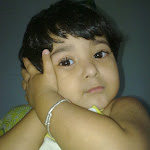GOVERNMENT OF INDIA
India attained her independence on 15th August 1947. The Indian Constitution came into effect on 26th January 1950. The first general elections under the new Constitution were held during 1951-52. India is a bicameral parliament consisting of the Lok Sabha (House of the People) and the Rajya Sabha (Council of States). The members of the Lok Sabha are directly elected by the citizens of India. Presently, there are 545 members in the Lok Sabha. Each Lok Sabha is formed for a term of five years after which it is automatically dissolved and fresh elections are held.
The members of Rajya Sabha are elected indirectly i.e. the legislatures of the states and union territories elect 238 members to this house. The President appoints another 12 members who are experts in fields of science or arts. The elected members of the Rajya Sabha serve 6-year term, with one-third up for elections every 2 years.
The Government of India has three independent branches namely the executive, the legislature and the judiciary. The country has a federal structure with elected Governments in States. The Government of India , officially known as Union Government or sometime referred to as Central Government, is the governing authority of a federal union of 28 states, 6 Union Territories (administered directly by the Central Government) and a national capital territory (NCT-Delhi).
In spite of having a federal structure and a clear division of powers and an independent judiciary there is a strong bias towards making the Central Government more powerful than the state governments. Hence the government can be called as Quasi-Federal Government – that is partly federal and partly unitary.. Based on the distribution of powers between the Central Government and the State Government there are three lists - Union list, State list and Concurrent list (powers entertained by both center and state).
India has adopted parliamentary system of government. The Parliament can legislate on 97 subjects of the union list, 47 subjects of the concurrent list and in times of national and state emergency, can also make laws on the 66 subjects of the state list.The President of India is the executive head. He has all the constitutional powers but exercises them only on the advice of the real executive i.e. the Prime Minister and his council of ministers.
Similarly the state government is headed by a Governor. He enjoys nominal powers. The real power is enjoyed by the Chief Minister who is assisted by a council of ministers.
The third branch of the government i.e. the judiciary is followed both at national and state level. The judiciary consists of the Supreme Court of India, High Courts at the state level, and District and Session Courts at the district level.
The Supreme Court of India has original, appellate and advisory jurisdiction. Its exclusive original jurisdiction extends to any dispute between the Government of India and one or more states, or between the Government of India and any state or states on one side and one or more states on the other, or between two or more states, if and in so far as the dispute involves any question (whether of law or of fact) on which the existence or extent of a legal right depends.
The High Court stands at the head of a State's judicial administration. There are 21 High Courts in the country, three having jurisdiction over more than one state. The Union Territories come under the jurisdiction of different State High Courts. Each High Court comprises a Chief Justice and such other Judges as the President may, from time to time, appoint.
conti.








movie.jpg?imgmax=800)

_ml-thumb.jpg?imgmax=800)




Post A Comment: